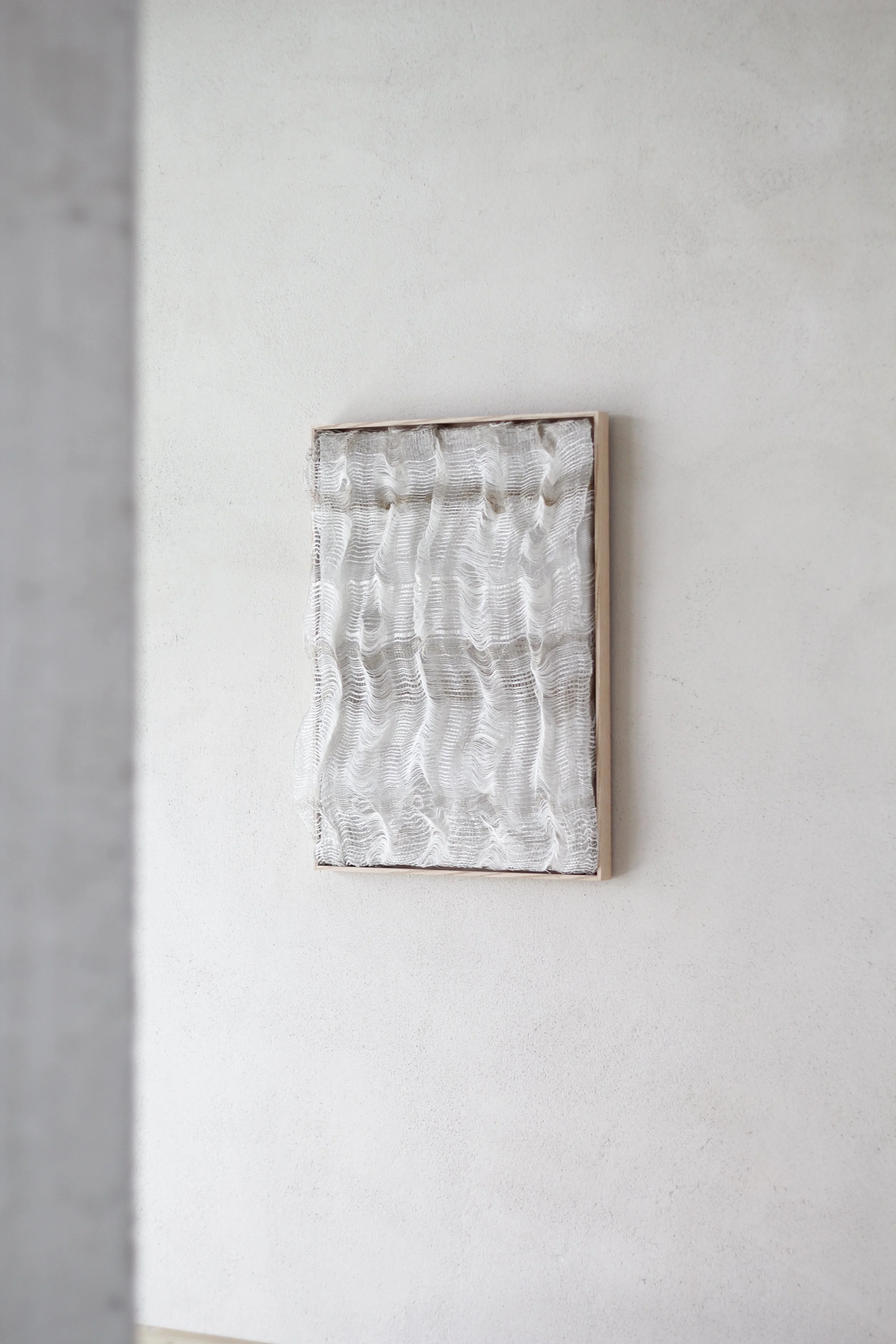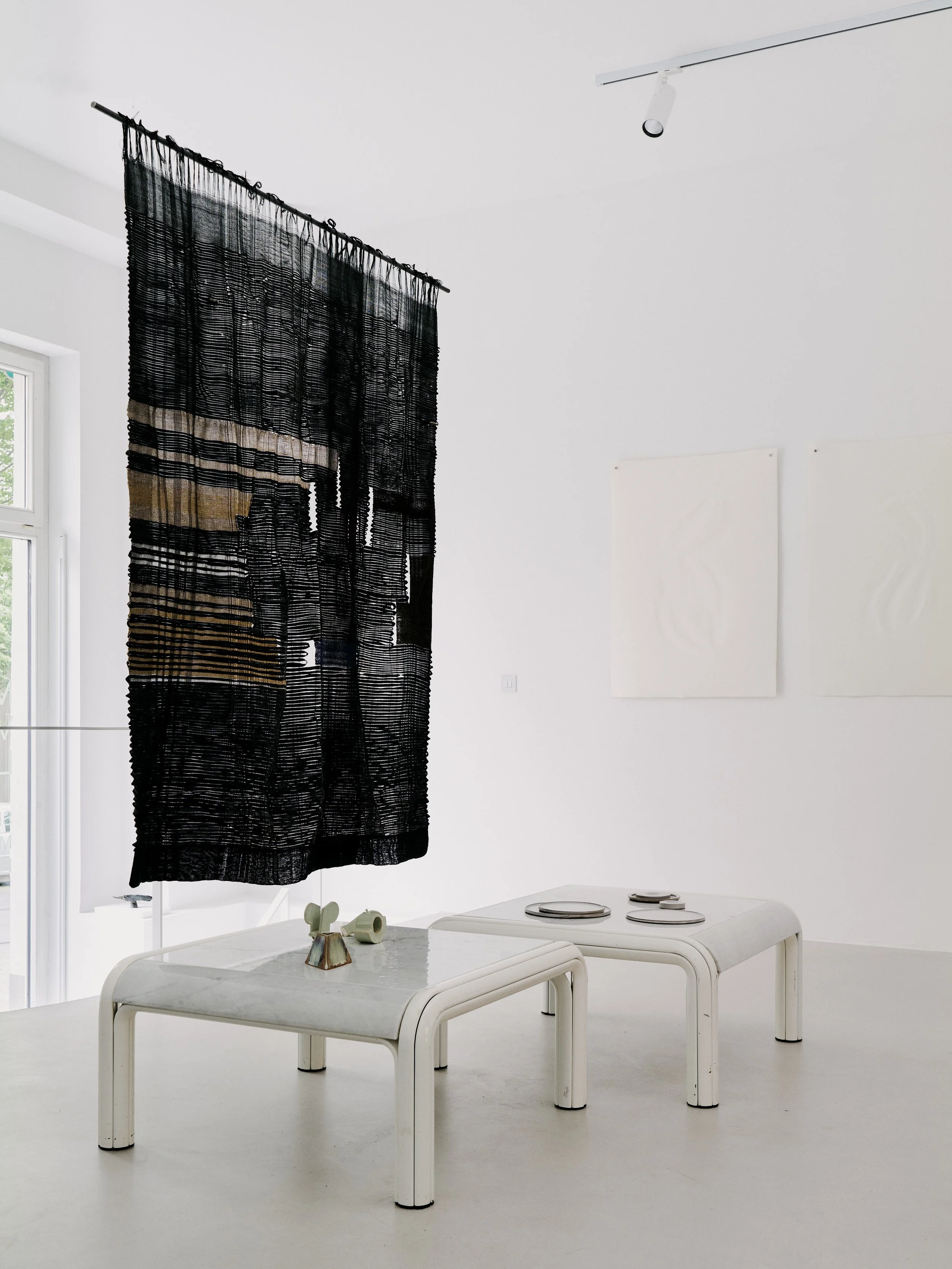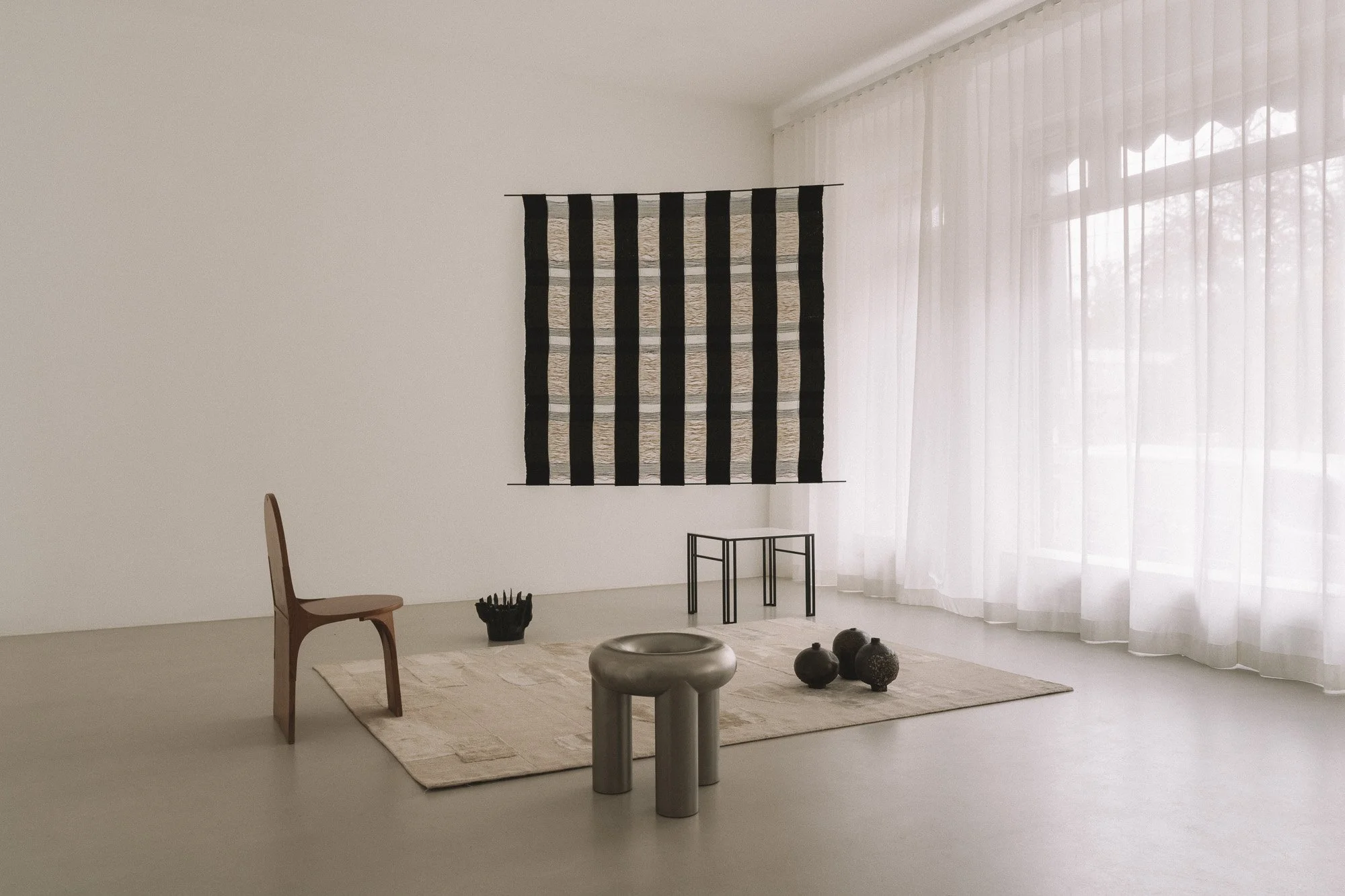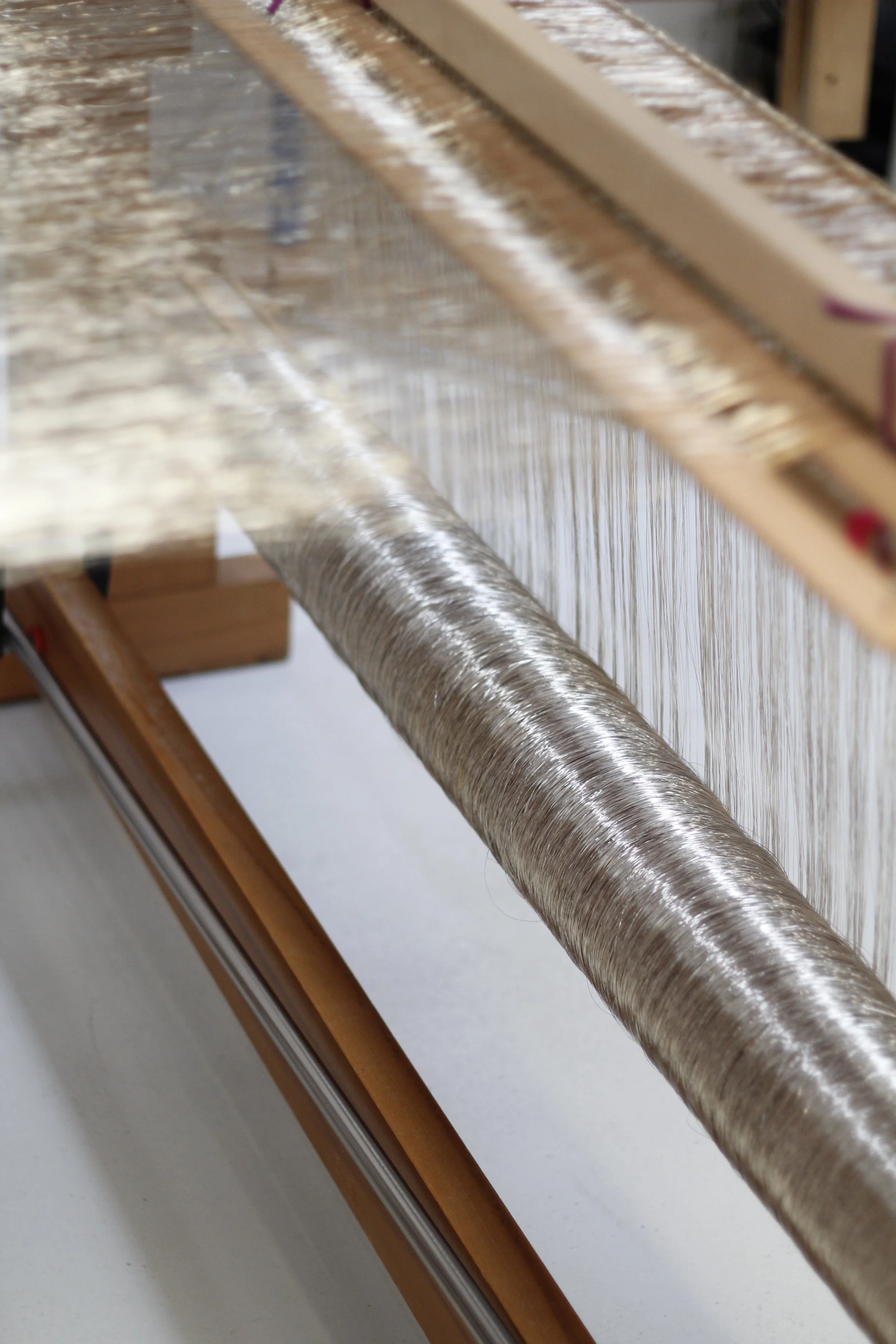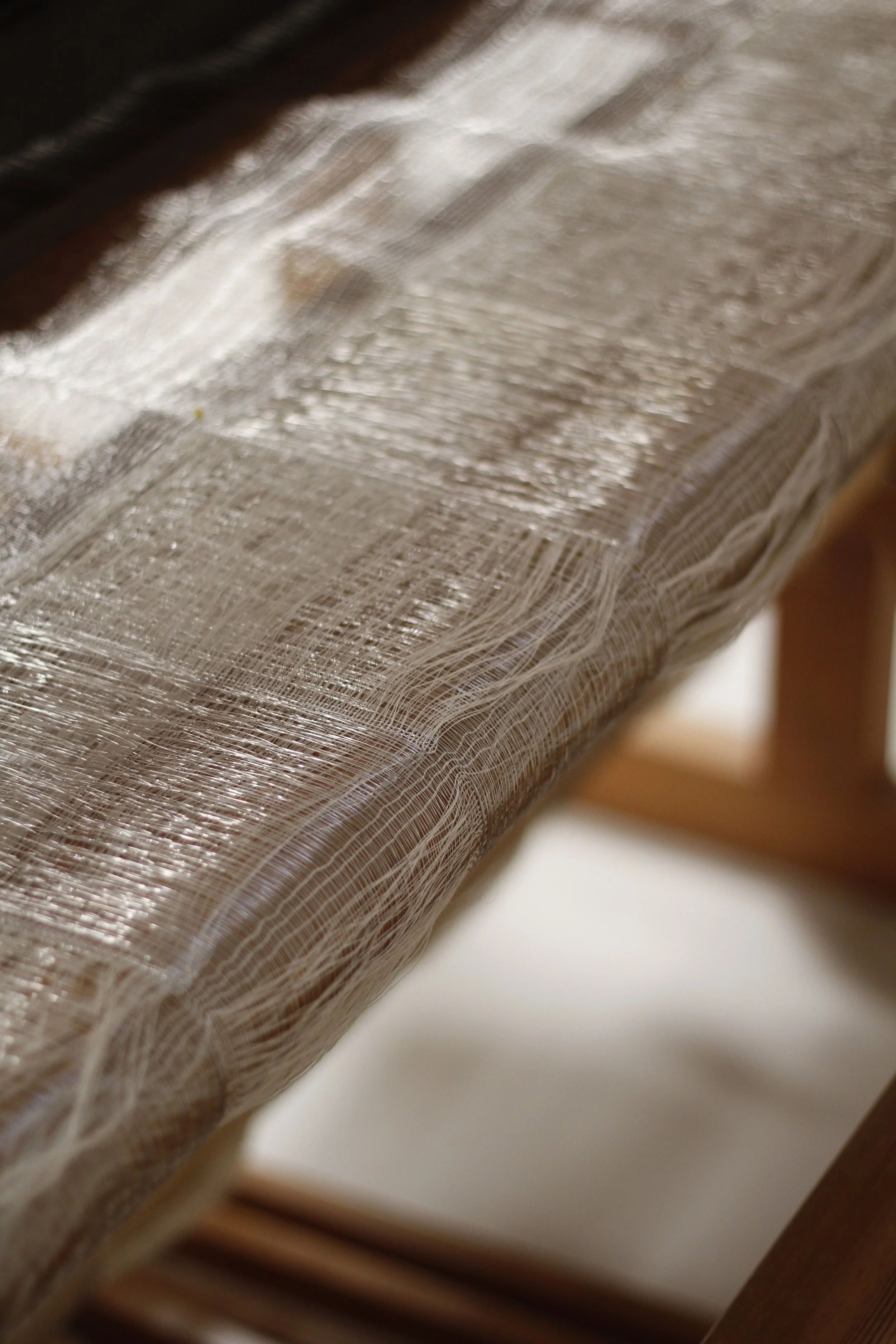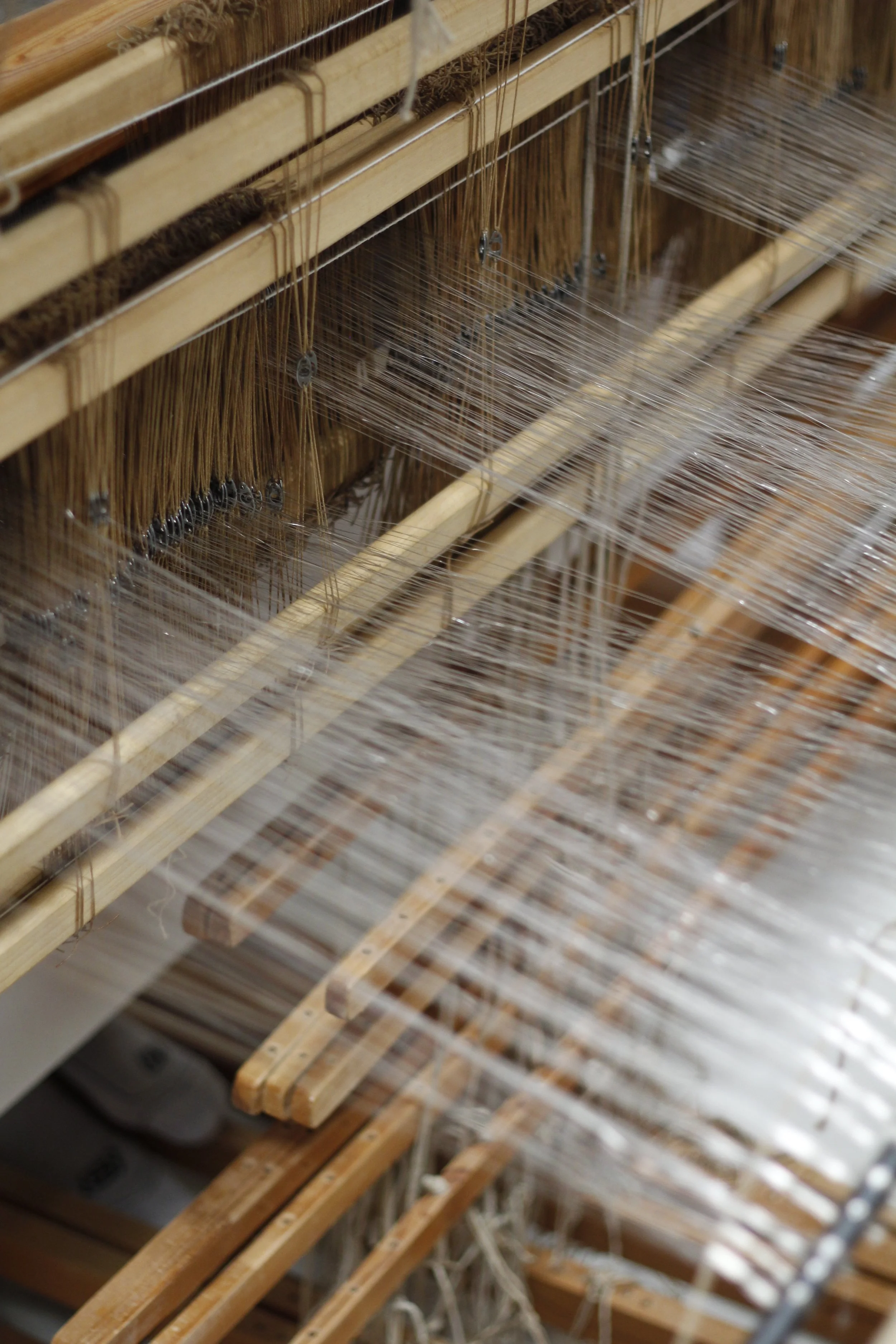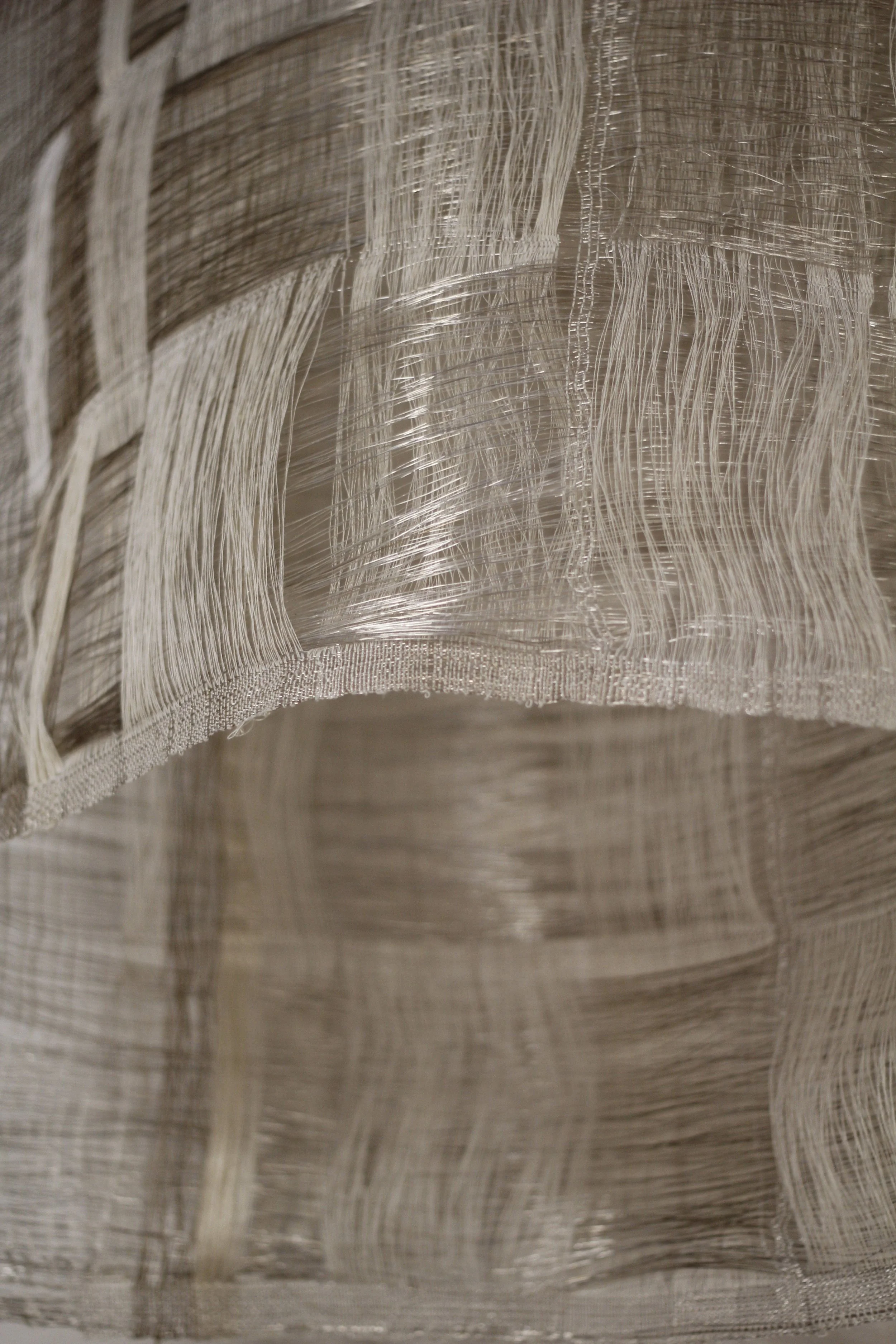Studio Jumi
Julia and Miriam, please introduce yourself:
We, Julia Buntzel and Miriam Rose Gronwald are a Berlin-based artists duo known as Studio Jumi. Working at the interface of art, craft and design, our work is rooted in translating traditional hand-weaving techniques into the language of contemporary art.
Studio Jumi © Chiara Lüghausen
#1 Both of you had a creative background even before you trained as weavers at Werkhof Kukate. How has this shaped you personally and your art?
We both have previous experience from different departments at the theater, Julia worked in the department of stage and costume design and Miriam as a dancer. It’s a tight-knit atmosphere where everyone works together and for each other. That kind of teamwork really shapes your working ethos and was, aside from our artistic language, a familiarity that brought us together as an artist duo.
#2 Your choice of (weaving) materials is often unconventional. How do you decide on them?
We are interested in the different characteristics that come up when using unconventional weaving material. Often, it’s an intuitive choice, driven by our quest to challenge the possibilities on the loom.
#3 How do material and form correlate with each other concerning your work?
The form is the final step in the process of creating. It is the result of the material and the weaving pattern. How a material behaves when it's released from the tension in the loom is one of the few elements that are very hard to calculate before the weaving process, especially when using materials such as metal or rubber. It's a delicate moment where we need to listen and see where the work wants to go before giving it its final shape.
Left: Laminae © Studio Jumi, Right: Lanscape I © Tobias Koenig
#4 Weaving is a traditional craft. Among other things, you work with recycled materials (e.g. Landscape I). How would you assess the opportunities between the tried and tested and the new?
We believe that the essence of weaving lies in the potential of interlacing any kind of material into the tight structure of warp and weft. If you take away the efficiency that manifested itself into the craft, you are left with this remarkable construction that allows two thread systems to be interlaced with each other in endless possibilities. So, when we use old bike tubes in our artworks, 'recycled materials' is not really the right word for what we are aiming for. It is more about continuing the story of hand-weaving in the year 2025 – we are taking advantage of this incredible system that was perfected over centuries, and are introducing the idea of using contemporary materials that are abundant to us today. Just like maybe cotton, linen and other natural fibers were available to weavers a long time ago.
Grid II © Clemens Poloczek
#5 How do you approach a new project? What does a day in your studio look like for you?
There is always a dialogue in the room about works we saw or textiles that fascinate us. We are continuously spinning ideas back and forth, which leads us to our next project. As we like to work with materials that differ from the traditional, we spend a lot of time experimenting before starting the actual work.
#6 What might the interfaces between your work and architecture look like?
There are probably more similarities in the way we think about constructing a textile with an architect than with, let's say a painter. You have to have a complete plan before you start setting up the loom, including detailed calculations and knowledge about the characteristics of materials. It isn’t necessarily that crucial in visual artworks. When we have architects in our weaving workshops there is often an immediate understanding of the work on the loom.
#7 How does your environment influence your work?
Berlin is rough and its perception on beauty is not stereotypical, which makes this city so fascinating and challenging at the same time. Weaving on the other hand, is a beautiful craft that asks for sensibility and time. We think that creating in these opposites keeps our work interesting and challenges us to create beyond the comfort zone.
Blue Horse © Jean-Paul Pastor Guzmán
#8 Three things that inspire you at the moment?
Olga de Ameral, relationships and being in nature.
#9 What do you currently read, watch, listen to?
Julia: Alte Sorten by Ewald Arens, Brazilian Bossa Nova
Miriam: Tell Me Everything by Elizabeth Strout, NTS radio
#10 For the sensing space exhibition, you created a piece specifically for the show. Could you tell us a bit about it and how it responds to the theme of the senses?
The free-hanging textile work ‘Transcendence’ is composed of over a thousand metal threads and fine natural white linen. To highlight the distinct qualities of the materials, the warp and weft threads are only interwoven in an outline of a grid, while most of the material is floating above and behind the woven structure. From a technical point of view, it is almost no longer a fabric, but rather a stream of fibers and metal bundles moving in and out of the grid. The transparency of the work interacts with the surrounding space, conveying a sense of spirituality – the light reflecting in the silver threads and its calm, cloud-like presence hovering within the clear lines of the room.
Transcendence © Studio Jumi
Links
Instagram: @studio.jumi
Website: www.studiojumi.com
Photo Credits: © Chiara Lüghausen, © Clemens Poloczek, © Jean-Paul Pastor Guzmán, © Tobias König, © Studio Jumi
Interview by Helena Tietmeyer edited by Caroline Steffen


